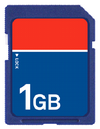
CWT Software Configuration Handbook
Term |
Description |
|---|---|
AVR |
An 8-bit RISC single chip microcontroller using on-chip flash memory for program storage. The CWT terminal has up to five AVRs depending on hardware configuration. |
codec |
A codec is a device or program capable of encoding and/or decoding a digital data stream or signal. In CWT, codecs are used for creating and playing media files. |
CWT 104 (terminal) |
MP 104 upgraded with a monochrome STN graphic display, CWT electronics and CWT software. |
CWT Compact Classic |
MP 104 Compact (MPC) upgraded with a monochrome STN graphic display, CWT electronics and CWT software. |
CWT 104/Compact Classic |
Common term for the CWT 104 and CWT Compact Classic models |
Flash memory |
Flash memory is non-volatile computer memory that can be electrically erased and reprogrammed. It is a technology primarily used in memory cards and USB flash drives for general storage and transfer of data between computers and other digital products |
GUI |
Graphical User Interface |
JTAG |
Joint Test Action Group (JTAG) is the common name used for the IEEE 1149.1 standard. A JTAG interface is a special four/five-pin interface added to a chip (designed so that multiple chips on a board can have their JTAG lines daisy-chained together) and a test probe only needs to connect to a single "JTAG port" to have access to all chips on a circuit board. |
Main board |
Same as CPU board. |
MDB |
Multi-Drop Bus, a protocol used for communication with, for Example:, coin verifiers, bill readers and card readers in vending machines and payment terminals. |
Online card validation |
Direct validation against a card issuer’s validation system via WebOffice. See also Semi-online card verification below. |
OS |
Operating System. CWT uses Windows CE. |
PAT selection |
Selection between Payment, Article and Tariff. See Appendix I. |
RFID |
Radio-Frequency Identification is the use of an object (typically referred to as an RFID tag) applied to or incorporated into a product, animal, or person for the purpose of identification and tracking using radio waves. Most tags contain at least two parts. One is an integrated circuit for storing and processing information, modulating and demodulating a radio frequency (RF) signal, and other specialized functions. The second is an antenna for receiving and transmitting the signal. |
SD card |
Secure Digital (SD) is a flash memory card. If the card has a write protect tab this MUST NOT be in the locked position.
|
Semi-online card validation |
Card validation is performed against black lists stored in WebOffice. The lists are regularly updated. See also Online card verification above. |
STN display |
A Super-Twisted Nematic display, a type of monochrome passive matrix liquid crystal display used in CWT 2110, 2115, CWT Compact, CWT 104 and CWT Compact Classic. Technically, it is an FSTN display because it has a Film compensating layer between the STN display and rear polarizer for added sharpness. |
TFT display |
A Thin Film Transistor liquid crystal display is a variant of liquid crystal display, which uses thin film transistor technology to improve image quality. TFT LCD is one type of active matrix LCD, though it is usually synonymous with LCD. This type of display is used in the CWT 2120 touch screen. |
UI |
User Interface |
UTC time |
Coordinated Universal Time (UTC) is International Atomic Time (TAI) with leap seconds added at irregular intervals to compensate for the earth's slowing rotation. Leap seconds allow UTC to track closely UT1, which is mean solar time at the Royal Observatory, Greenwich. Time zones around the world are expressed as positive or negative offsets from UTC. Local time is UTC and the time zone offset for that location, plus an offset (typically +1) for daylight saving time, if in effect. UTC replaced Greenwich Mean Time on 1 January 1972 as the basis for the main reference time scale or civil time in various regions. |
WebOffice |
The back-office application used to manage the terminals |
XML schema |
XML schema or XSD (XML Schema Definition) is a language described by the W3C (World Wide Web Consortium) as the successor of DTDs (Document Type Definition). XSDs are far more powerful than DTDs in describing XML languages. They use a rich data typing system that allows working with more detailed constraints on the document's logical structure and must be processed in a more robust validation framework. XSDs also use an XML-based format, which makes it possible to use ordinary XML tools to help process them, although XSD implementations require much more than just the ability to read XML. |

